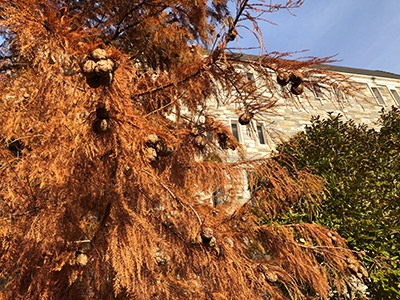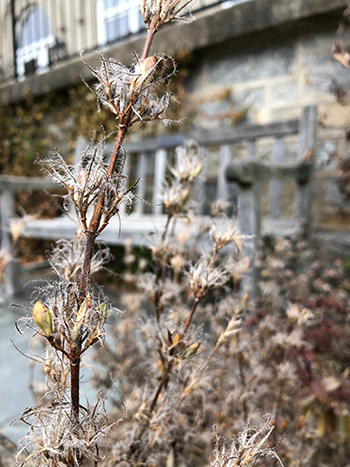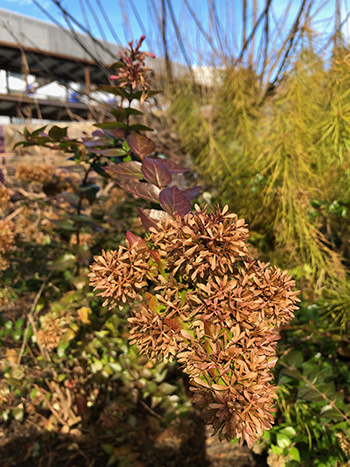
Plants of the Week: November 25

While a majority of autumn color has been lackluster this fall, Taxodium distichum, the common baldcypress, has been a reliable showstopper. Green needle-like leaves transition from a warm orange-red color to tawny shades of brown before dropping. Specimens can reach 100’ tall. Spread averages two-thirds the height so allow for plenty of room.
This North American native is typically found growing near perennial sources of water such as streambanks. While Taxodium is ideal for wet locations, they thrive remarkably well in most soil conditions including heavy, compacted, and poorly draining soils.
The US Forest Service lauds the many attributes of T. distichum noting the strong vertical accent it provides to the landscape, the roots that do not lift sidewalks or curbs, the lack of major disease problems, the year round interest (including great fall color and small leaves which can easily be incorporated into beds as mulch) and the diversity of cultivars selected for form and width.
‘Monarch of Illinois’ is a cultivar selected for its wide-spreading habit. The Arboretum’s ‘Monarch of Illinois’ specimen is located on the southeast side of McCabe Library where it is thriving on a hillside in full sun. Photo credit: J. Coceano

Ruellia humilis, or wild petunia, isn’t actually a petunia (which are relatives of peppers and potatoes), but a member of the family Acanthaceae. The herbaceous perennial, native to the eastern and central regions of North America, blooms during the summer months. Ruellia thrives in just about every condition save waterlogged soils and shady locations. Ruellia humilis attracts a wide variety of insect pollinators; the lavender blooms are especially attractive to long-tongued bees and butterflies.
Tubular, bell-shaped, petunia-like flowers each with five shallow rounded lobes are born in the upper leaf axils atop 12” – 24” hairy stems. Seeds explode from ripened seed capsules and are capable of traveling up to ten feet! Plants readily seed, so plant accordingly. Ideal locations are the front of a border or in a rock garden. Look for wild petunia in plantings near the sundial in front of Pearson Hall. Photo credit: J. Coceano

Abelia x grandiflora ‘Canyon Creek’ is a plant that I find myself enamored with more when its not in flower. ‘Canyon Creek’ grows 3’ – 3.5’ in both height and width. New growth is coppery-orange in color, maturing to lime green. Lightly fragrant, white and pink trumpet-shaped flowers begin appearing in late spring and bloom continues throughout the summer months. In the fall, the foliage takes on copper hues. While touted as evergreen, plants drop leaves toward the northern limits of its hardiness range. Once flowering has finished, clusters of sepals persist and provide what looks like a second flowering. Cut stems make wonderful additions to flower arrangements. A group of Abelia x grandiflora ‘Canyon Creek’ is planted in the John W. Nason Garden. Photo credit: J. Coceano





No Comments